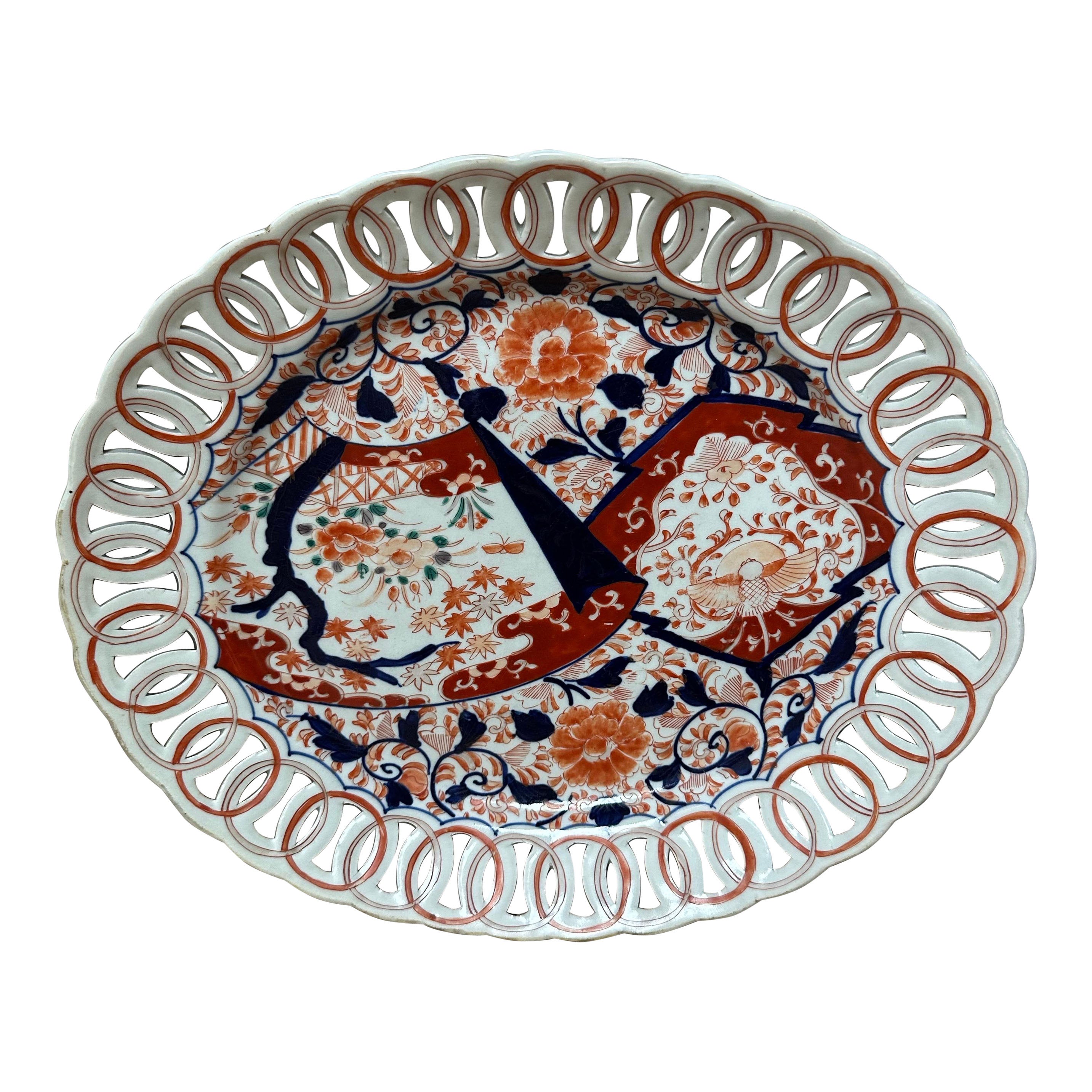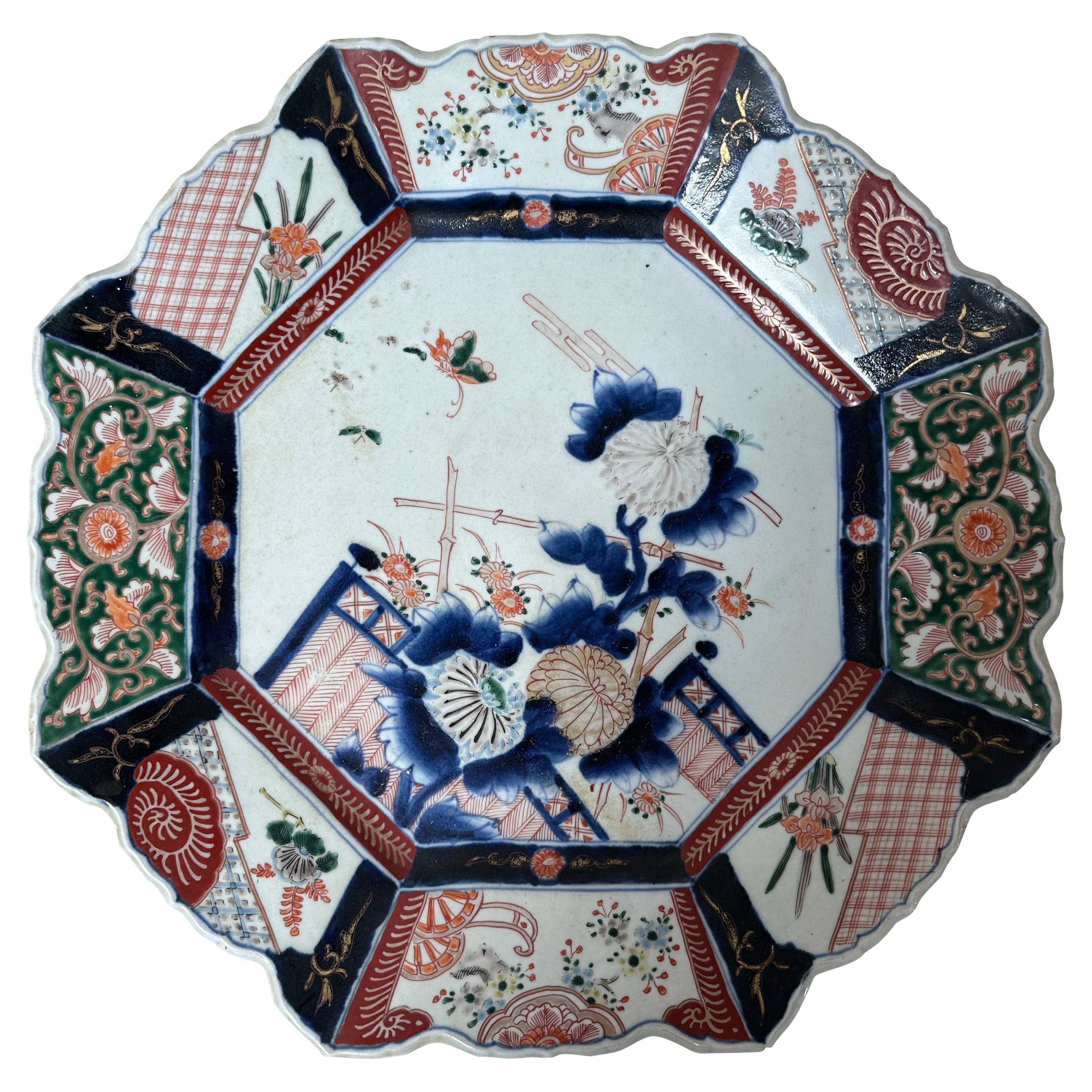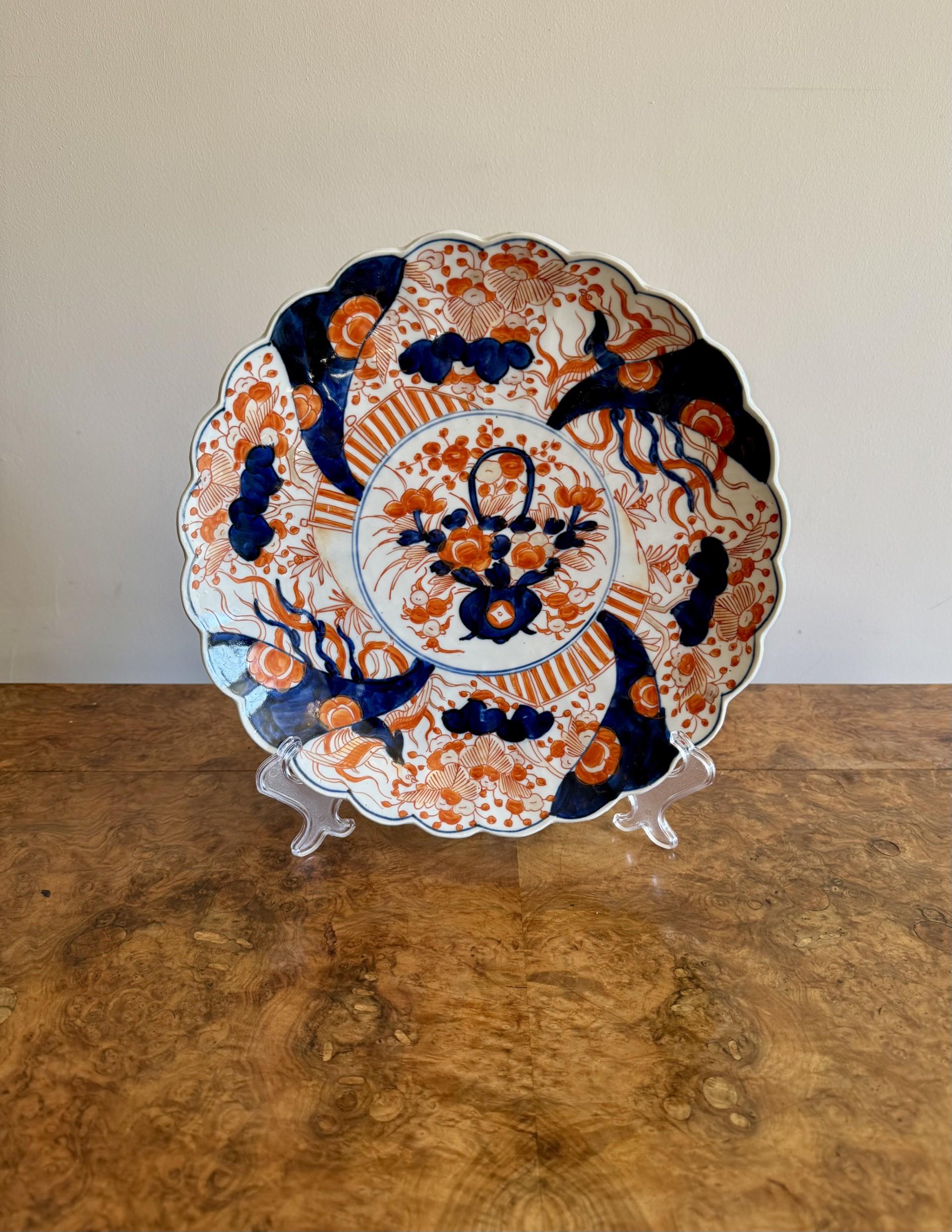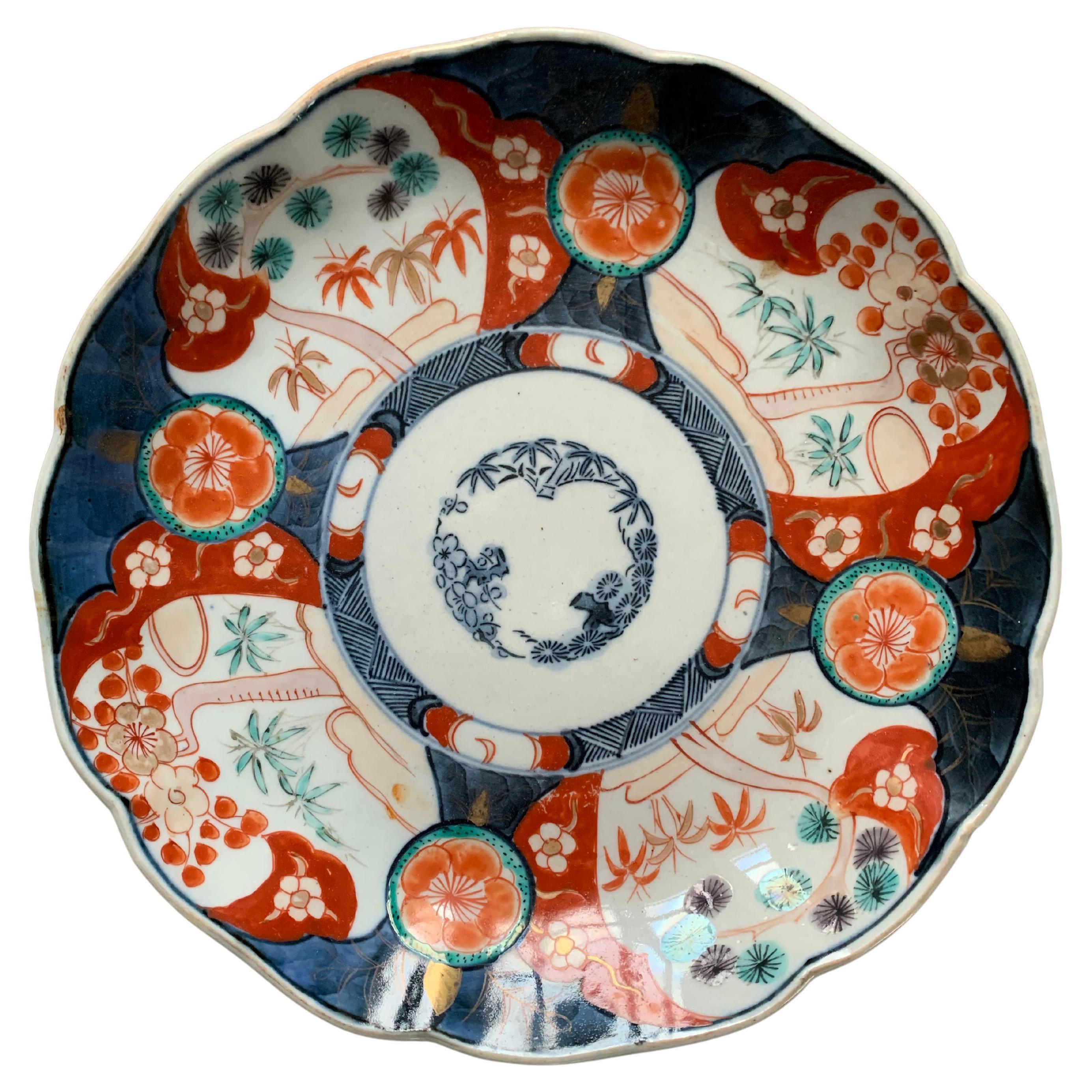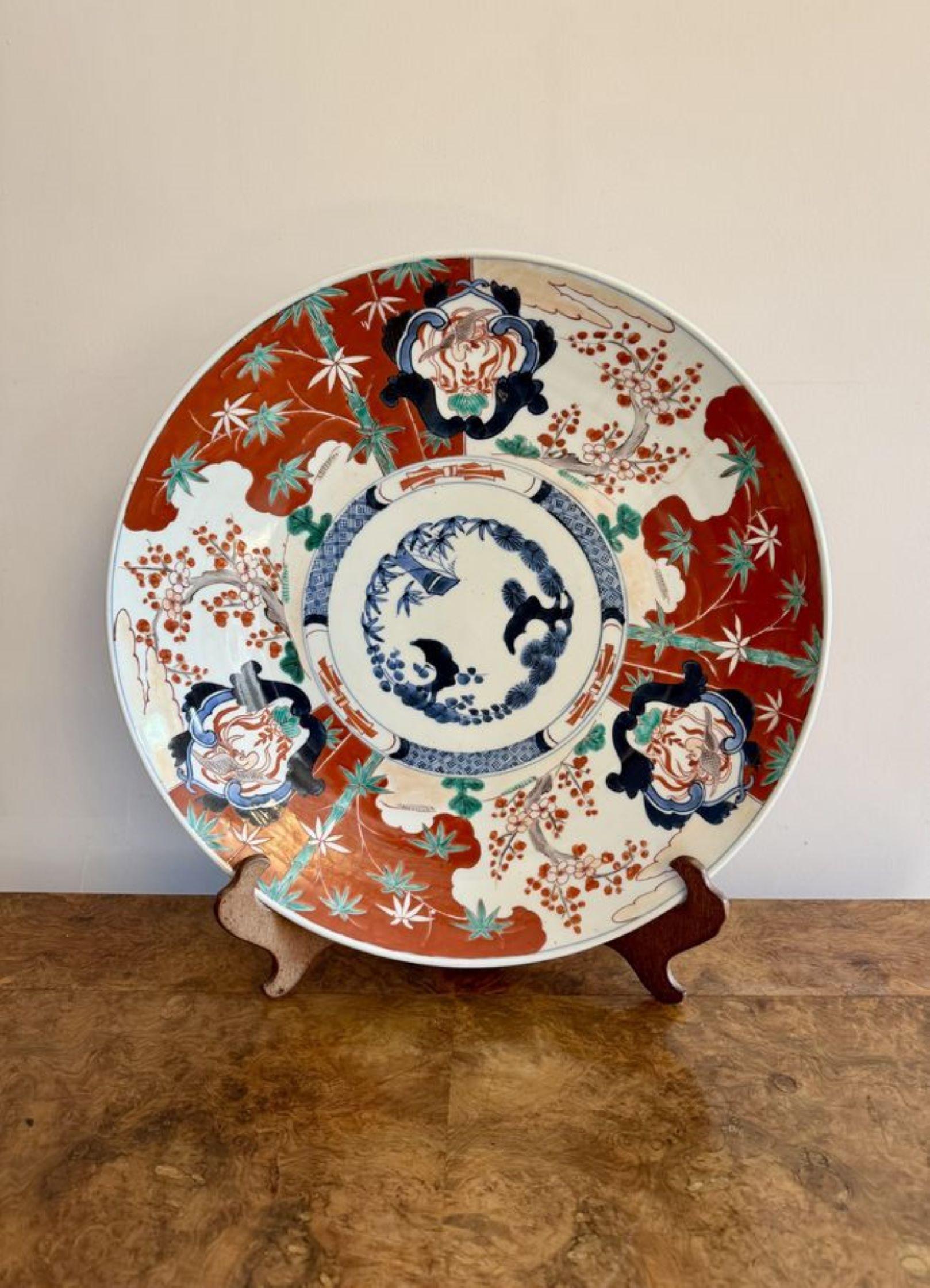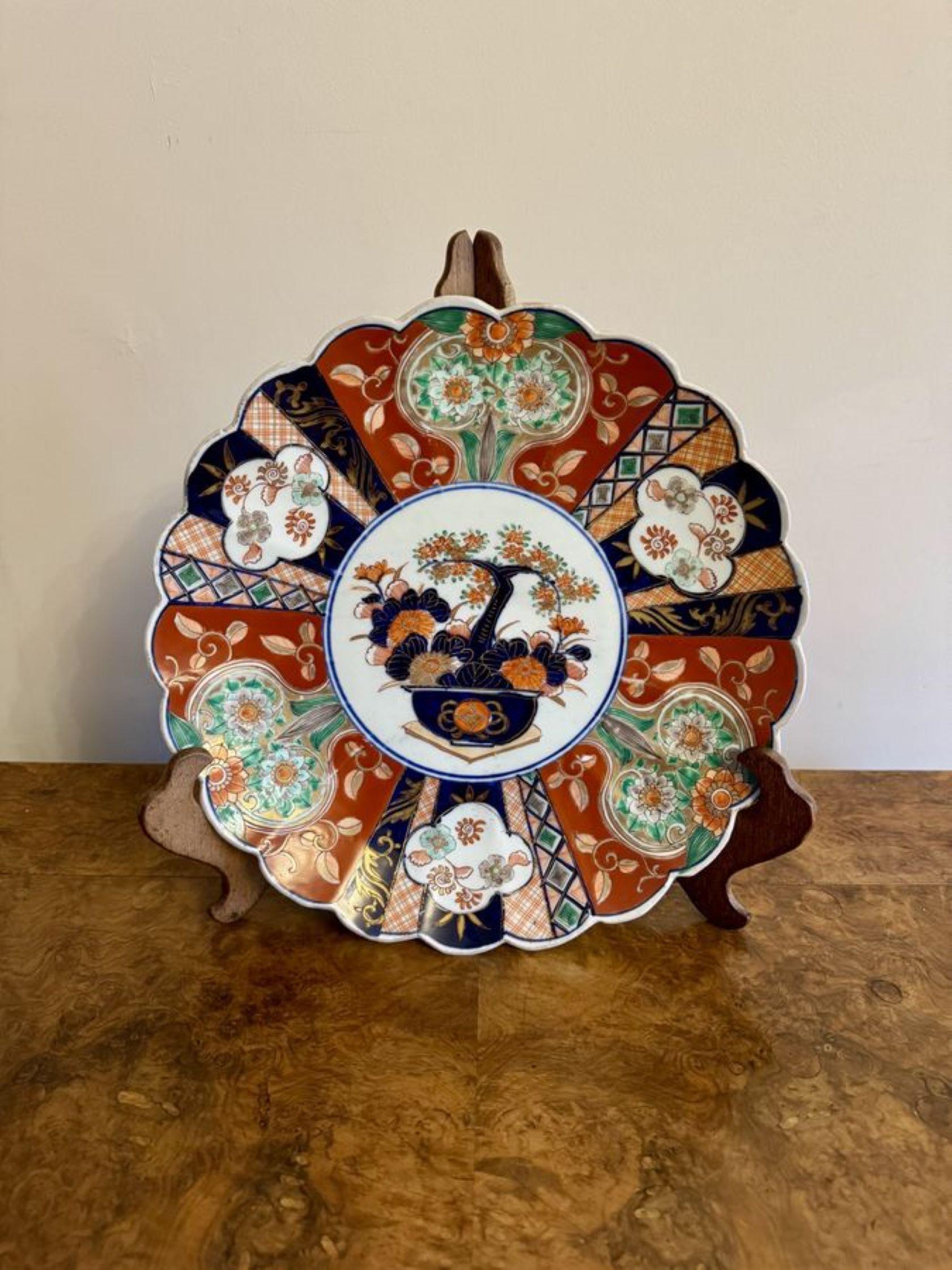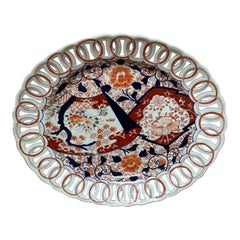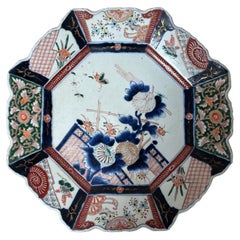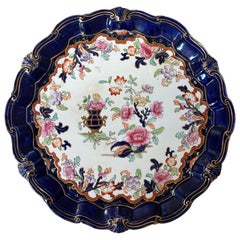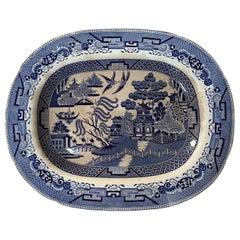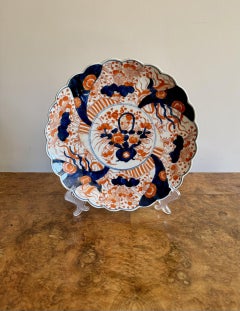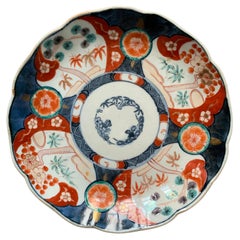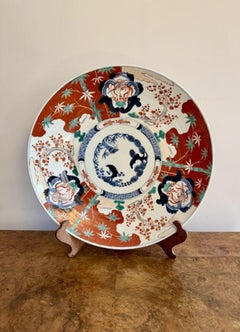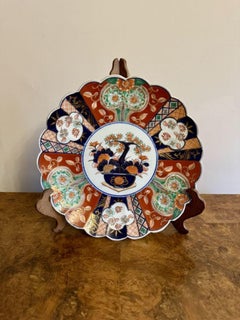Objekte ähnlich wie Imari Porcelain Large Plate, Edo Meiji Period, Early 18th Century
Möchten Sie mehr Bilder oder Videos?
Zusätzliche Bilder oder Videos von dem*der Anbieter*in anfordern
1 von 14
Imari Porcelain Large Plate, Edo Meiji Period, Early 18th Century
565,73 €
Angaben zum Objekt
Imari ware is a style of Japanese porcelain made in the town of Arita and exported from the port of Imari. It is characterized by its vibrant colours, typically including underglaze blue with overglaze red, gold, and black, and often features detailed floral patterns.
Produced in Arita, Japan, and exported through the port of Imari.
* Design: Often includes bold, layered patterns, large-scale motifs, and lavish gilding.
* Motifs: Common themes include floral designs, geometric patterns, and scenes from nature.
* Export: Heavily exported to Europe from the late 17th to the early 18th centuries.
* Influence: The style was so popular that it was copied by Chinese and European producers.
The Imari style gained popularity in Europe during the Baroque era, where its vibrant colors and gilded designs complemented the theatrical and opulent interiors of the time. The porcelain was not only materially desirable but also represented the sophistication and prosperity of Japanese and Chinese cultures. It continues to be admired and collected for its beauty and historical significance
This exquisite large Imari porcelain plate is a masterful example of early 18th-century Japanese artistry, created during the transitional period between the Edo and Meiji eras. What sets this piece apart is its bold, scalloped form and its exuberant hand-painted decoration—each section a study in balance, asymmetry, and narrative beauty.
The plate features a dynamic composition of alternating panels—florals, geometric latticework, and stylized landscape scenes—all painted in the iconic Imari palette of underglaze cobalt blue, overglaze iron red, and delicate gilding. At the center, a finely detailed floral still life with birds anchors the design, symbolizing prosperity and harmony. The intricacy and layered storytelling in the decoration are hallmarks of high-quality Imari ware, rarely seen at this scale and condition.
Larger plates from this era with such sophisticated workmanship are increasingly rare. The combination of size, age, and quality—along with the presence of hand-applied gilding and painterly brushwork—makes this a museum-worthy collector’s piece. It speaks to the peak of Japanese porcelain production for both domestic and export markets and offers lasting value for discerning collectors and interior connoisseurs.
This piece is both delicate and bold. The glaze has a soft, glass-like sheen, and the palette is warm yet vivid. The lobed edge adds sculptural depth, and each panel tells its own story, drawing the eye around the plate in a rhythmic, almost meditative way. Though decorative, the plate has a quiet power—anchoring a wall, shelf, or tabletop arrangement with ease and grace.
Imari porcelain originated in Arita, Japan, and was exported globally from the port of Imari. During the 17th and 18th centuries, it became a coveted item among European nobility and collectors. This plate likely represents a transitional piece from the late Edo into the early Meiji period, when artisans maintained traditional motifs while subtly evolving their styles for both Japanese and international tastes.
- Zugeschrieben:Imari Porcelain (Schöpfer*in)
- Maße:Höhe: 2,54 cm (1 in)Durchmesser: 26,67 cm (10,5 in)
- Stil:Edo (Aus dem Zeitalter)
- Materialien und Methoden:
- Herkunftsort:
- Zeitalter:
- Herstellungsjahr:Circa 1810
- Zustand:Geringfügige Schäden. The plate has a visible chip on the top of its rim. Detailed images in this listing show the signs of the chip.
- Anbieterstandort:Worcester Park, GB
- Referenznummer:1stDibs: LU10436245380112
Anbieterinformationen
Neu bei 1stDibs
In den letzten sechs Monaten beigetreten.
Noch keine Bewertungen
Geprüfte*r Anbieter*in
Jede*r Anbieter*in erfüllt strenge Standards bezüglich Echtheit und Zuverlässigkeit
Gründungsjahr 2024
1stDibs-Anbieter*in seit 2025
Typische Antwortzeit: <1 Stunde
- VersandAngebot wird abgerufen …Versand von: Worcester Park, Vereinigtes Königreich
- Rückgabebedingungen
Einige Inhalte dieser Seite wurden automatisch übersetzt. Daher kann 1stDibs nicht die Richtigkeit der Übersetzungen garantieren. Englisch ist die Standardsprache dieser Website.
Authentizitätsgarantie
Im unwahrscheinlichen Fall eines Problems mit der Echtheit eines Objekts kontaktieren Sie uns bitte innerhalb von 1 Jahr für eine volle Rückerstattung. DetailsGeld-Zurück-Garantie
Wenn Ihr Objekt nicht der Beschreibung entspricht, beim Transport beschädigt wurde oder nicht ankommt, kontaktieren Sie uns bitte innerhalb von 7 Tagen für eine vollständige Rückerstattung. DetailsStornierung innerhalb von 24 Stunden
Sie können Ihren Kauf jederzeit innerhalb von 24 Stunden stornieren, ohne jegliche Gründe dafür angeben zu müssen.Geprüfte Anbieter*innen
Unsere Anbieter*innen unterliegen strengen Dienstleistungs- und Qualitätsstandards, wodurch wir die Seriosität unserer Angebote gewährleisten können.Preisgarantie
Wenn Sie feststellen, dass ein*e Anbieter*in dasselbe Objekt anderswo zu einem niedrigeren Preis anbietet, werden wir den Preis entsprechend anpassen.Zuverlässige weltweite Lieferung
Unsere erstklassigen Versandunternehmen bieten spezielle Versandoptionen weltweit, einschließlich individueller Lieferung.Mehr von diesem*dieser Anbieter*in
Alle anzeigenGroßer japanischer Imari Porcelain Teller mit netzförmigem Rand, 19. Jahrhundert
Von Imari Porcelain
Dies ist ein Imari-Teller, der sich durch seine leuchtenden Farben und komplizierten Muster auszeichnet. Sie weist einen durchbrochenen "Ring"-Rand auf, ein übliches Merkmal der Imar...
Kategorie
Antik, 19. Jahrhundert, Japanisch, Meiji-Periode, Servierplatten und -ge...
Materialien
Porzellan
Japanischer Imari-Achteck-Teller, handbemaltes Porzellan, Meiji-Ära
Von Imari Porcelain
Diese exquisite Imari-Porzellanschale aus dem 19. Jahrhundert hat eine flache, achteckige Form und ist reich mit handgemalten Pfingstrosen, Insekten und floralen Tafeln verziert. Sie...
Kategorie
Antik, 19. Jahrhundert, Japanisch, Meiji-Periode, Servierplatten und -ge...
Materialien
Porzellan
Antiker Ridgway Chinoiserie-Porzellanteller mit kobaltfarbener Bordüre
Dieser auffallend große dekorative Teller ist ein klassisches Beispiel für die frühe Ridgway-Keramik. Er zeigt die lebhafte Farbpalette im Imari-Stil und die komplizierten Details, d...
Kategorie
Frühes 20. Jahrhundert, Englisch, Chinoiserie, Servierplatten und -geschirr
Materialien
Tonware
Antike Platte mit Weidenmuster, groß, um 1850
Diese exquisite große Servierplatte aus Keramik zeigt das zeitlose Blue Willow-Muster, ein beliebtes Design, das romantische Legenden mit klassischer Kunstfertigkeit verbindet. Diese...
Kategorie
Antik, 1850er, Englisch, Chinoiserie, Servierplatten und -geschirr
Materialien
Keramik
Mason's Ironstone Imari-Teller, 2er-Set, CIRCA 1900
Von Miles Mason Porcelain
Dieser Mason's Ironstone-Teller, ein exquisites Beispiel englischer Keramikkunst, ist mit der reichhaltigen Imari-Palette aus tiefem Kobaltblau, Eisenrot und handaufgelegter Vergoldu...
Kategorie
Antik, Frühes 20. Jhdt., Englisch, Frühviktorianisch, Speiseteller
Materialien
Keramik, Porzellan
1.402 € / Set
Antiker britischer Ankerkeramik-Teller mit 'Japan'-Muster (CIRCA 1890)
Dieser britische Teller "Japan" von Anchor Pottery ist ein beeindruckendes Beispiel für britische Keramik des späten 19. Jahrhunderts und besticht durch seine leuchtende Farbgebung u...
Kategorie
Antik, Spätes 19. Jahrhundert, Englisch, Ästhetizismus, Servierplatten u...
Materialien
Eisenstein
Das könnte Ihnen auch gefallen
Schöne Qualität antiker japanischer Imari-Teller aus Japan
Schöne Qualität antiken japanischen Imari Teller, mit einer Qualität japanischen Imari Teller mit einem gewellten Rand geformt, mit einem hübschen Korb von Blumen in der Mitte umgebe...
Kategorie
20. Jahrhundert, Japanisch, Tonwaren
Materialien
Keramik
Imari China-Porzellanteller aus dem 19. Jahrhundert
Schöner Porzellanteller mit Imari-Dekor. Auf diesem Teller ist der Hintergrund blau und weiß, mit Reserven, in denen wir rote Blumen und Bambusblätter Muster beobachten können. Imari...
Kategorie
Antik, 19. Jahrhundert, Japanisch, Servierplatten und -geschirr
Materialien
Porzellan
Antiker japanischer Imari-Plattenteller in Qualität
Hochwertiges antikes japanisches Imari-Ladegerät, das mit Bambussprossen, Vögeln, Bäumen, Blumen und Blättern verziert ist, handbemalt in den Farben Rot, Blau, Grün und Weiß.
D. 1900
Kategorie
Frühes 20. Jahrhundert, Japanisch, Tonwaren
Materialien
Keramik
Schöne Qualität antiker japanischer Imari-Teller mit Jakobsmuschel-Rand
Schöne Qualität antiken japanischen Imari Teller, mit einer Qualität antiken japanischen Imari Teller mit einer Jakobsmuschel förmigen Rand, mit einem Korb von Blumen in der Mitte um...
Kategorie
20. Jahrhundert, Japanisch, Tonwaren
Materialien
Keramik
Antiker japanischer Imari Porcelain Teller
Wunderschöner antiker Imari-Porzellanteller aus dem 18. bis 19. Jahrhundert mit gezacktem Rand. Handbemalt mit zentralem blauem Medaillon, umgeben von leuchtenden orangefarbenen, pur...
Kategorie
Antik, 19. Jahrhundert, Japanisch, Japonismus, Porzellan
Materialien
Porzellan
Japanischer Imari-Porzellanteller, 19. Jahrhundert
Japanischer Imari-Porzellanteller, 19. Jahrhundert
Kategorie
Antik, 19. Jahrhundert, Japanisch, Servierplatten und -geschirr
Materialien
Porzellan
